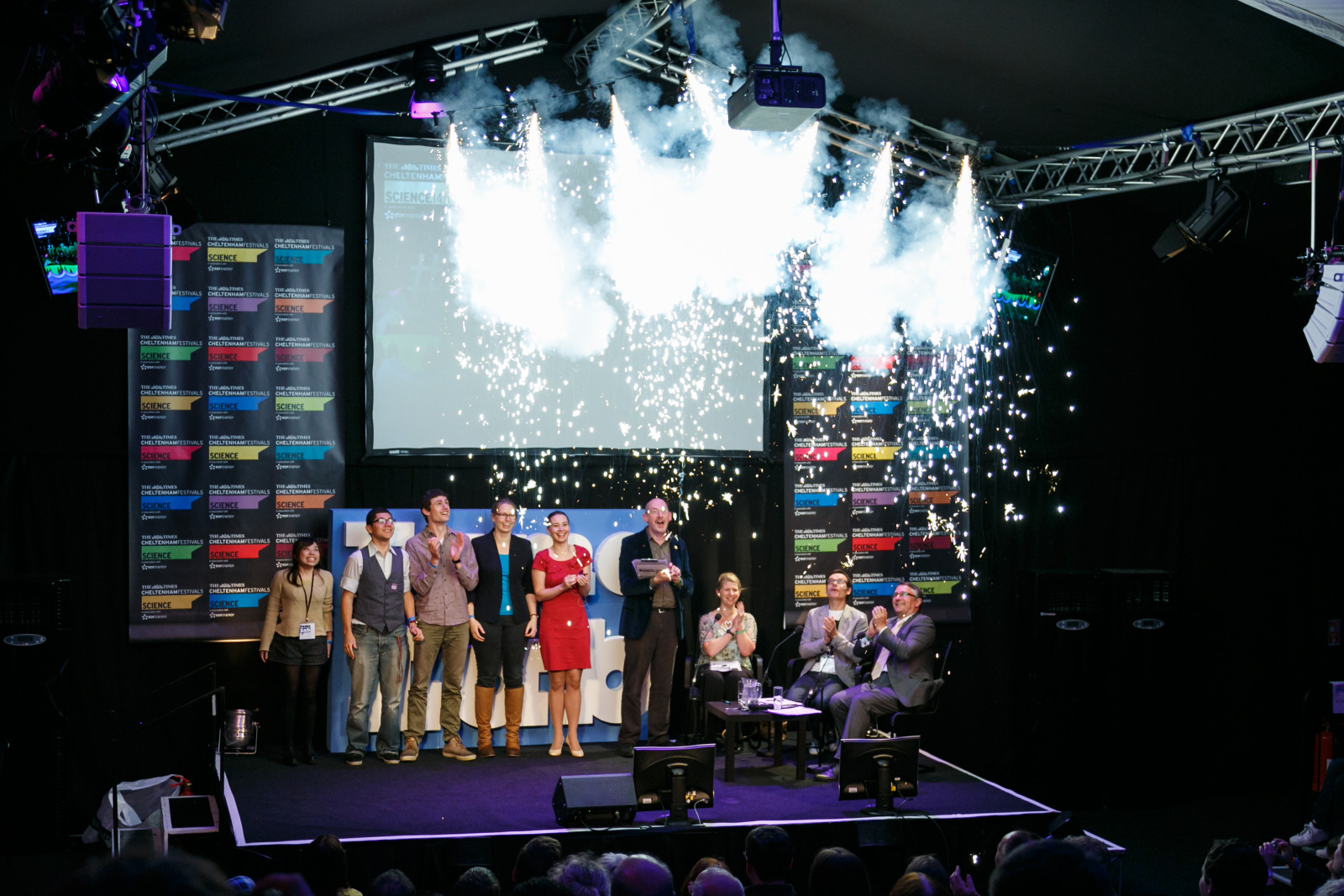FameLab: The natural nuclear reactor
Interview with
Cambridge is currently in the run up the local FameLab final! FameLab is a  competition where scientists battle it out to be the best at giving engaging short talks on their favourite areas of research. Paul Clarkson chose to do his three-minute talk on a natural nuclear reactor, as he explains to Ginny Smith...
competition where scientists battle it out to be the best at giving engaging short talks on their favourite areas of research. Paul Clarkson chose to do his three-minute talk on a natural nuclear reactor, as he explains to Ginny Smith...
Paul - Hi, how are you doing?
Ginny - So, tell me about your work. You're a PhD student. Is that right?
Paul - Yeah, that's correct. I'm currently doing a PhD in the application of face change materials. So, it's to do with nanofabrication, things on the very small scale and taking advantage of what they actually can do, which is change between an amorphous to crystalline state.
Ginny - So, making very tiny materials that can change with temperature and that sort of thing.
Paul - Exactly.
Ginny - What are you going to be talking about in FameLab?
Paul - I'm actually going to be talking about our nuclear fission reactor?
Ginny - What made you choose that?
Paul - I used to be in a past life a nuclear research scientist before my PhD. As soon as you mention the word 'nuclear', it can become quite divisive. So, I like to be able to expel a lot of those belileved demons on it.
Ginny - Well, you've got me interested. So, you've got a 3-minute talk that you're going to do for us now. I think that's right?
Paul - That's correct.
Ginny - Okay, when you're ready, off you go...
Paul - Who listening has misplaced something? I have, my car keys. They go missing a lot. I accuse my housemates who are trying to sabotage my life and it can be quite annoying especially if you know you have to get somewhere important like KFC before it closes.
However, in the grand scheme of things, this is pretty trivial. But not everything that goes missing is trivial.
Imagine you are a French scientist in 1972 in Africa. You're working at the Oklo Uranium Mine and you have just calculated that roughly 200 kilograms of uranium 235 is missing. That's enough to make 6 nuclear bombs. Naturally, this raised a few eyebrows and the scientist tried to think of where it was. But they were never going to find it. The answer was right under their noses literally.
The uranium no longer existed as it had been burned up. That's right. the scientists were in fact, standing on an ancient natural nuclear fission reactor. But how is this possible?
Well, 3 key ingredients are needed for a nuclear reactor. One, you need fissionable material. This material is made up of atoms whose nucleus - a fat mass of protons and neutrons - will split into smaller nuclei and release energy when it absorbs neutron. Two, you need neutrons in order to keep the reaction going and three, you need a moderator - something that can help control the rate of the nuclear reaction. It slows down neutrons and allow them to be absorb by the fissionable material.
And it turns out that 2 billion years ago, Oklo had all of these things. One, it had a large concentration of uranium 235, which is the fissionable material. Two, it had neutrons provided by normal radioactive decay of surrounding rocks. And most importantly, three, it had water. Water is excellent in slowing down neutrons.
And so with this mix, Oklo was able to sustain nuclear reactions for over 200,000 years with an average power rating of about 100 kilowatts. That's enough to keep a few hundred kettles powered for eons. So, why is this relevant today? Scientists and geologists have been investigating the movement of the fission waste from the Oklo reactor over this time period, one of the key things needed to be understood for a nuclear waste depository. What has been found is that the nuclear waste hasn't travelled more than a few centimetres over 2 billion years.
That is remarkable. That's without intelligent design or human engineering. Nature has yet again provided a potential solution and it just goes to show that sometimes when you look for something that is missing, you can in fact find something that is far more valuable.









Comments
Add a comment